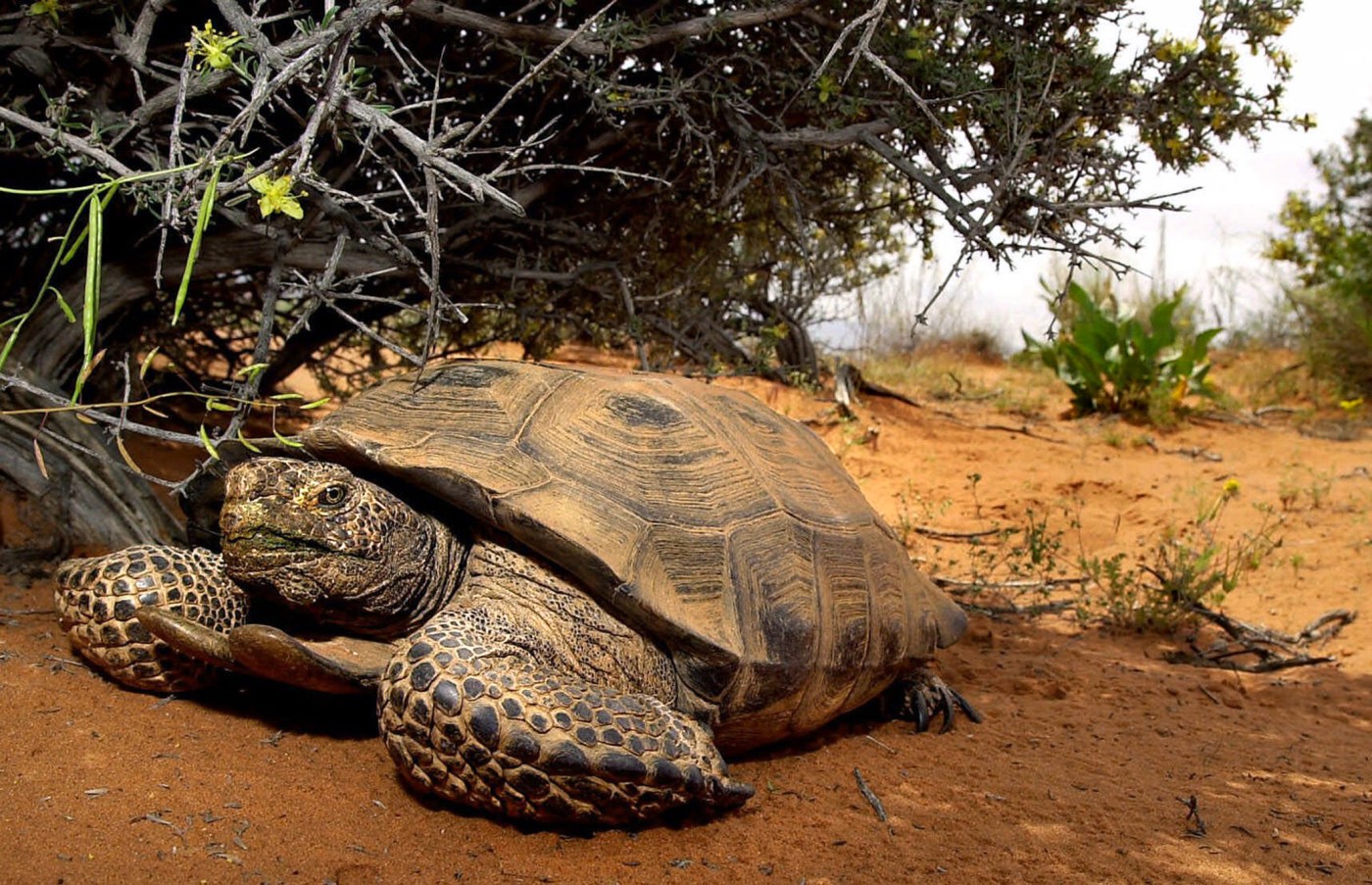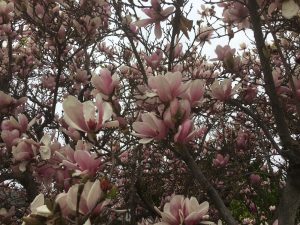Millions of acres of the Mojave Desert, home to five military bases and at least 40 protected species, including the desert tortoise and Joshua trees, will have more protection thanks to a designation as California’s first Sentinel Landscape.
The 3.5 million acres located north of Los Angeles and the Inland Empire received the distinction this week in an announcement from the Sentinel Landscape Partnership, a collaboration between the departments of Defense, Agriculture and Interior that was formed in 2013. The area includes multi-use public lands, farmlands, recreational lands and military training areas and lies in the desert between Ridgecrest and the Morongo Basin.
The new designation is a “force-multiplier” for Marine Air Ground Combat Center 29 Palms and the other Mojave Desert military installations supporting conservation efforts in range resilience and sustainability, Marine officials said.
Other bases in the Mojave Desert include the National Training Center Fort Irwin, Edwards Air Force Base, Naval Air Weapons Station China Lake and Marine Corps Logistics Base Barstow.
Related Articles
Trees, not asphalt: The $1 billion effort to build ‘cooler’ California school playgrounds
Oakley moves ahead with plan for big regional park with pump track, fishing, boating and camping
Decision on possible closure of Los Gatos horse stables delayed
Point Reyes seashore study favors elk fence removal
Antioch swim lagoon closed indefinitely for repairs
“As an example, it amplifies the combat center’s commitment to the tortoise (repopulation), habitat restoration and other recovery efforts on and off the installation,” said Chief Warrant Officer 2 Brandon Owen, a 29 Palms base spokesperson.
The tortoise population has declined 50% to 90% in the Mojave Desert due to a wide range of threats, including ravens, coyotes, habitation degradation, disease, being run over by vehicles and invasive plants.
A major component of the base’s program to restore the tortoise population is to have pregnant females brought in to nest in captivity so the babies hatch in a protected environment. This allows them to grow larger with predator-resistant shells before being released into the wilderness as juveniles. The base has released more than 100 babies into the wild in the last few years.
Base ecologists at 29 Palms said the tortoise program has resulted in a 96% survival rate of turtles inside the facility each year. In the wild, the survival rate is less than 50%, base officials said.
The tortoises are tagged and tracked over several years to monitor their growth, movements and survival rates. The research shows scientists which methods work best for raising baby tortoises, and this information benefits other installations, too, Marine officials said.
The new designation encourages the involved federal agencies to work more closely together and remove bureaucratic roadblocks, helping to bring together coalitions that include multiple nonprofits in the area and federal, state, county and local organizations who can now work together more easily in restoring habitat and ecosystem function by creating species corridors and improving soil health, and managing watersheds to build resilience to a warmer, more arid climate.
Some of the groups will include California State Parks, Death Valley National Park, Desert Tortoise Council, Joshua Tree National Park and the University of California Riverside.
In addition to better collaboration it also prevents development around military installations with the aim of protecting those areas, but not interfering with training. The federal designation lets local government agencies and nonprofits pay farmers to keep farms and wildlife habitats as thy presently are.
“The program provides DOD with the unique opportunity to expand and diversify our partnerships to enhance the resilience of military installations and the local communities that support them,” Brendan Owens, assistant secretary of defense for energy, installations, and environment, said in a statement. “This year, the department is excited to support the five newly designated landscapes in achieving their dual priorities of safeguarding national defense and enhancing installation and community resilience, particularly in the Pacific and Western regions.”
There are now 17 Sentinel Landscapes, the other newly designated areas are in Hawaii, New Mexico, Pennsylvania and Utah.
Among the goals centered around the new designation in the desert are reducing vehicle strikes that kill threatened, endangered, or sensitive species and reclaiming and protecting 50,000 acres of priority habitats through restoration, officials said.
The groups will also work through community outreach to promote conservation through education, including preventing illegal off-highway vehicle use and illegal cannabis growth. There will also be efforts to work with growing cooperatives to develop climate-resilient seeds.












